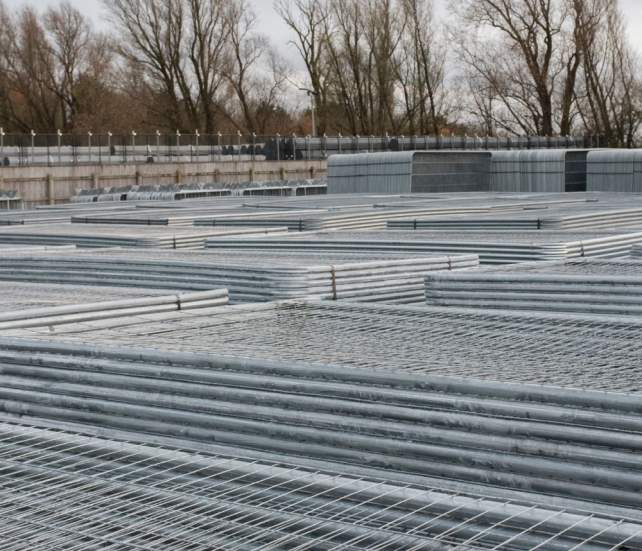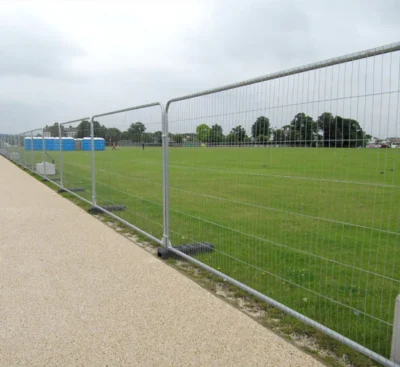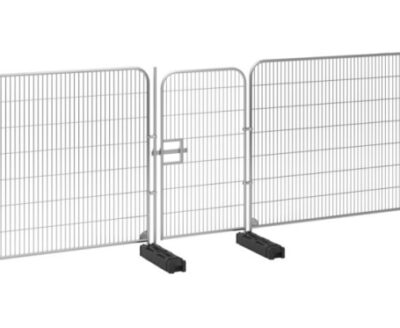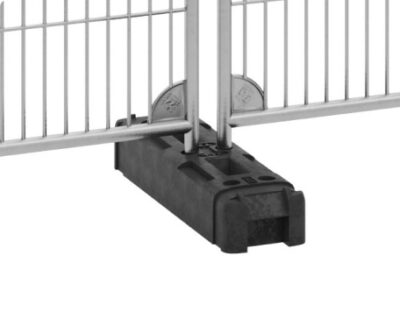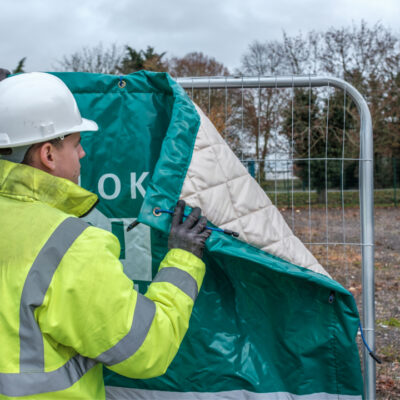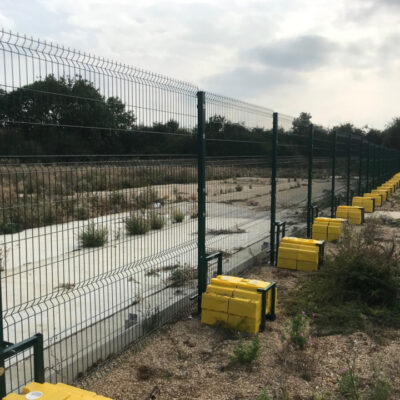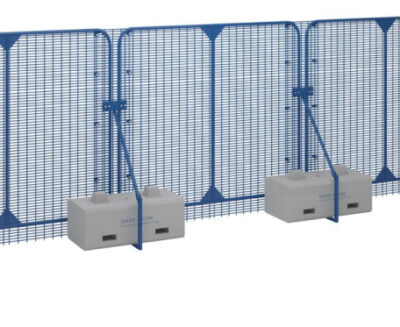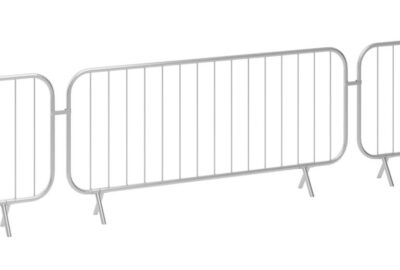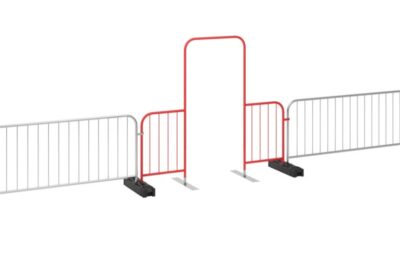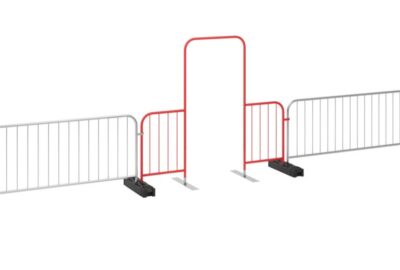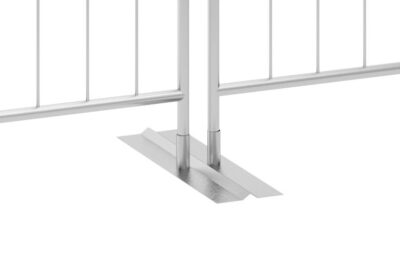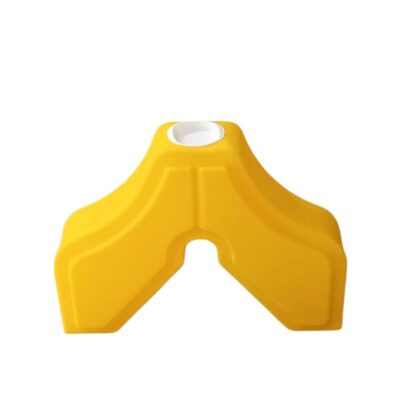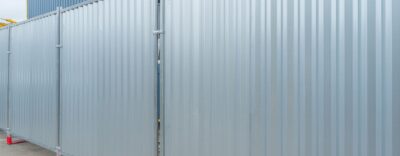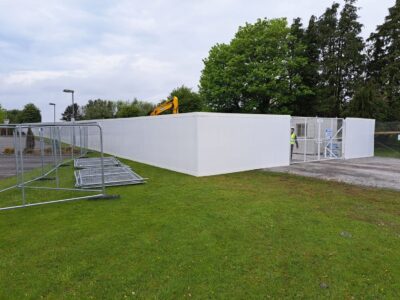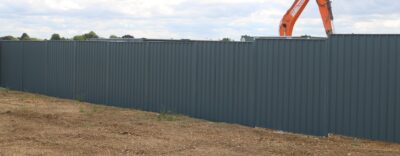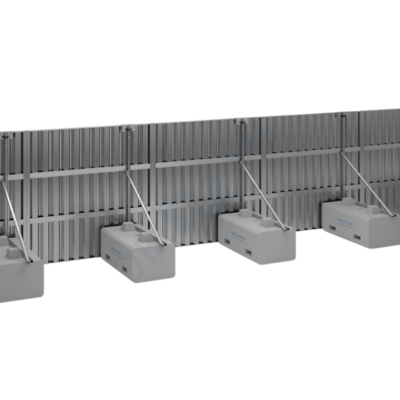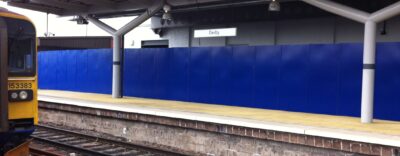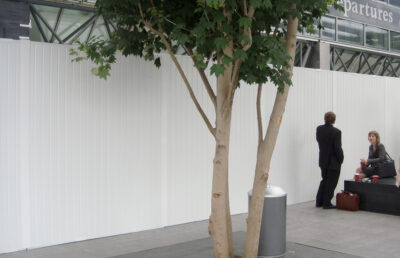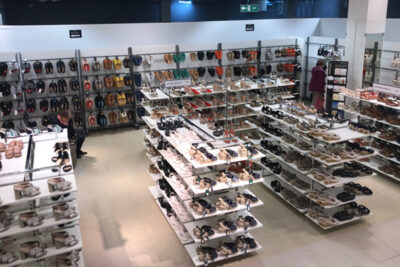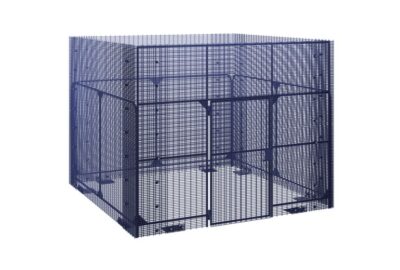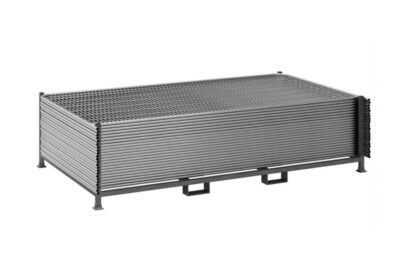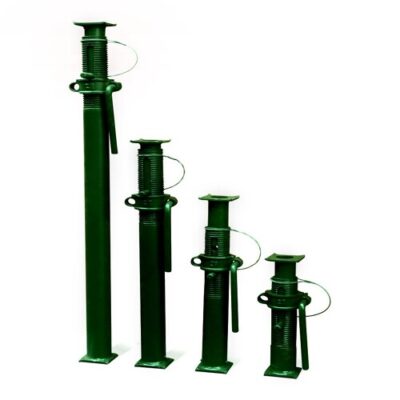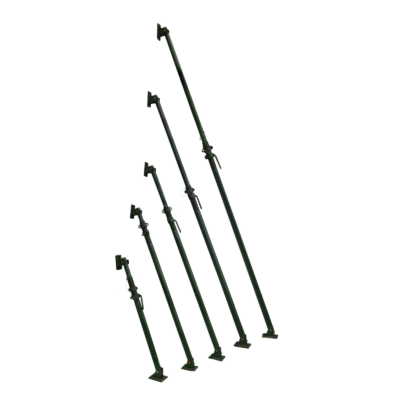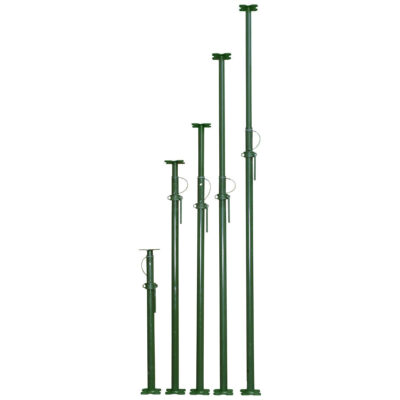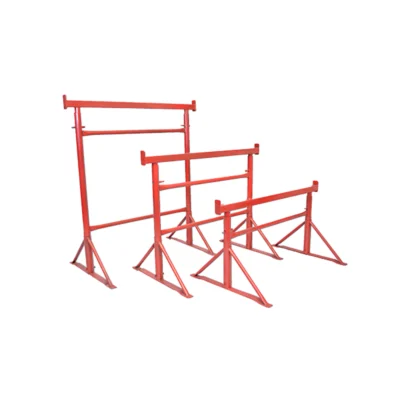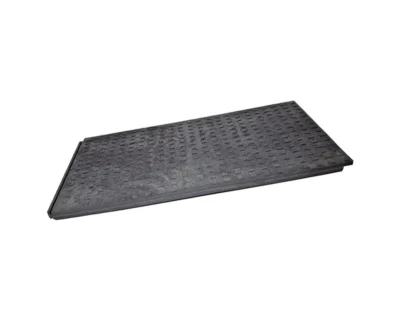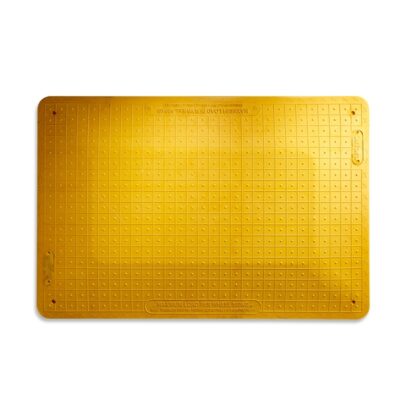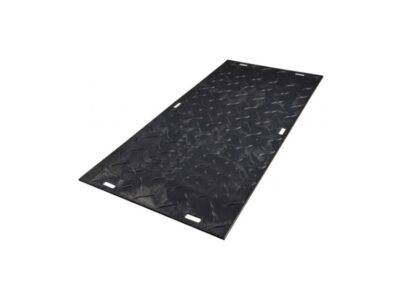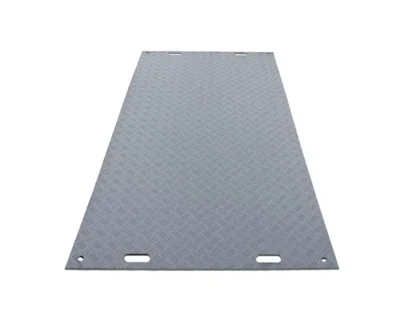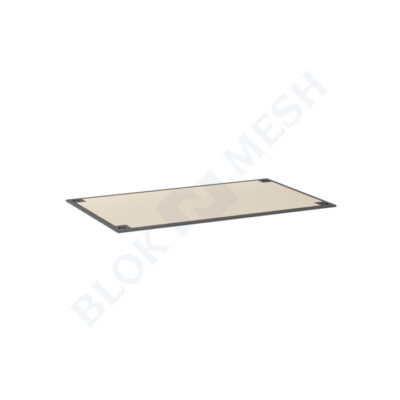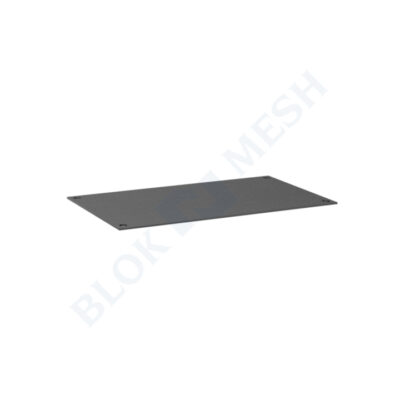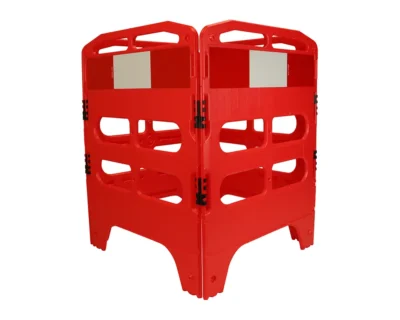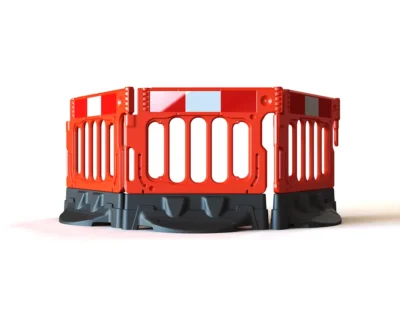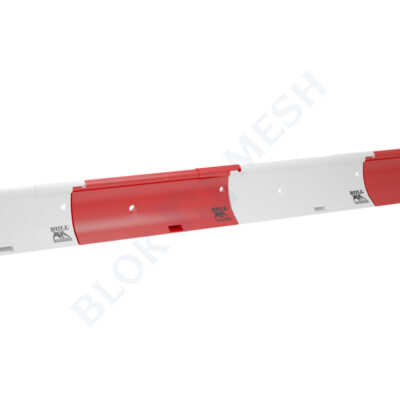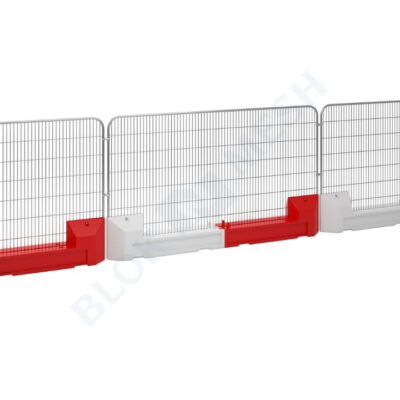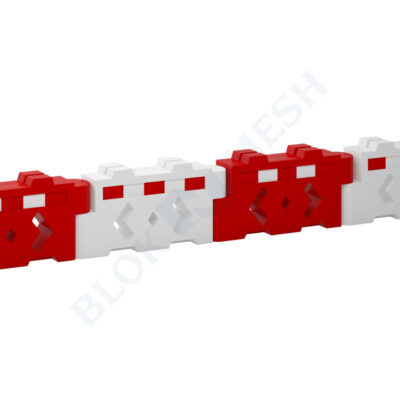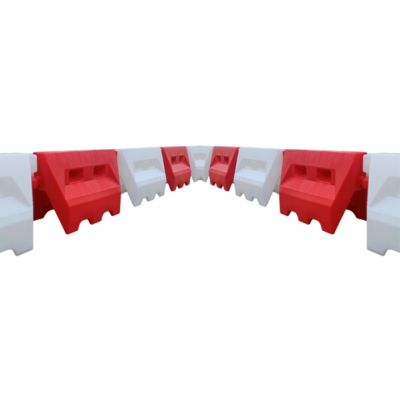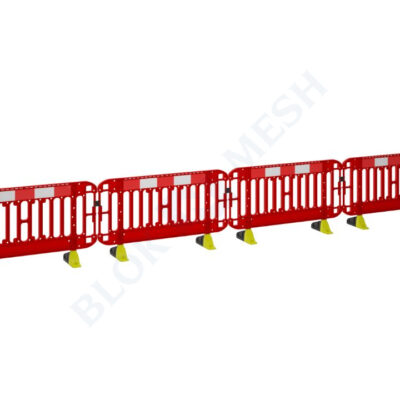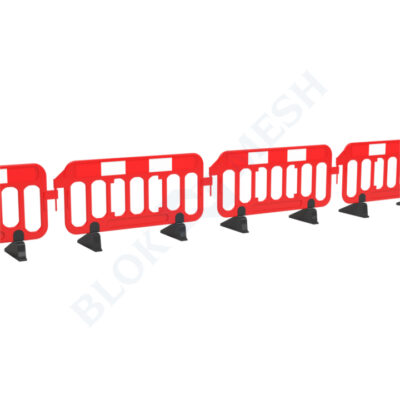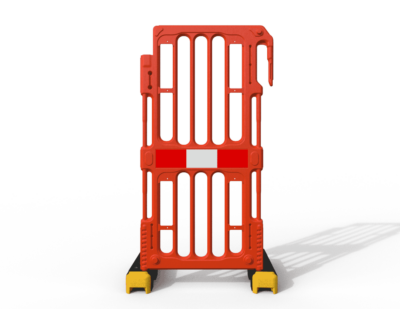Je winkelwagen is momenteel leeg!
About Temporary Fencing
Temporary fencing was brought to the market in the 1960s as a cost-effective and simple solution to create a temporary perimeter around construction sites for extra safety and security. Temporary fencing is prevalent in the construction sector but has been adopted by several other industries due to its effectiveness.
Industry-standard temporary fencing is typically 3.5m wide and 2m tall, comprising of a frame made from a bent steel tube, covered with steel wire mesh, welded together. Often temporary fencing panels also feature reinforced steel corner gussets for extra strength. Frames may also comprise of 4 separate tubes welded together to create a rectangular temporary fencing frame.
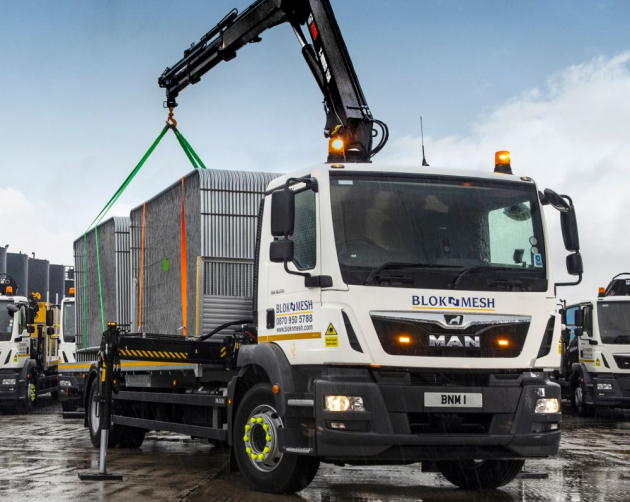
Types of Temporary Fencing Panel
Round-Top
Round-top temporary fencing is the most popular type of temporary fencing panel. The terminology describes a panel frame that has been bent to create a shape with radial curved top-corners.
Standard or Square-Top
This type of temporary fencing panel is usually the most economical, comprising of four steel tubes welded together, each corner is a 90-degree angle, hence the name “square-top”.
Ex-Hire
This phrase is often used to describe used temporary fencing panels, that were previously rented on a short-term project. These are often available to be purchased at a cheaper cost as some minor damage to the panels may have been sustained whilst on hire.
Temporary Fencing Mesh Types
Anti-Climb Mesh
All of our temporary fencing panels utilise anti-climb mesh, meaning that the apertures of the mesh are narrow (approx. 50mm wide) and difficult for a person to grip and climb over the fencing.
Euro Mesh / Standard Mesh
This type of mesh features wider apertures, which is consequently easier for hands to grip and climb the fencing. This type of mesh is not recommended for a multitude of applications.
Temporary Fencing Stability
Bracing Methods
Many bracing accessories are available with temporary fencing systems to add extra stability to the fence line. Most commonly, struts or braces are installed to the fencing panels which are generally galvanised steel tubes in various shapes which can be hammered into soft ground or have weighted ballast added to them to provide extra stability.
Weighted Ballast
Adding weighted ballast to the feet of temporary fencing has proved a popular method of adding stability to fencing. Sometimes bags of sand are used for this purpose, though we wouldn’t recommend this, as the bags can split causing sand to spill and the ballast to be ineffective. We have developed several weighted ballast options, purpose-built for temporary fencing including our BraceBlok™ and SoloBlok™ products.
Wind Load Calculations
Many construction sites now require a wind load calculation to be undertaken to gain a better understanding of what stabilisation methods and weighted ballast is required for the location and environment of the site. Locations with higher winds, on the coast, for example, may require more weighted ballast and stabilisation to ensure a lower risk of fallen fencing.
Temporary Fencing Materials & Powder Coating
As standard, temporary fencing is manufactured from galvanised steel tubes and steel mesh. The galvanising process minimises the likelihood of rusting ensuring that the fencing panels last for longer and are less susceptible to weather damage.
Temporary fencing panels can also be powder coated in a custom colour to suit company branding or for better visibility. Powder coating is the process of covering materials with an epoxy powder which is heated which forms a protective layer as well as adding colour if desired.
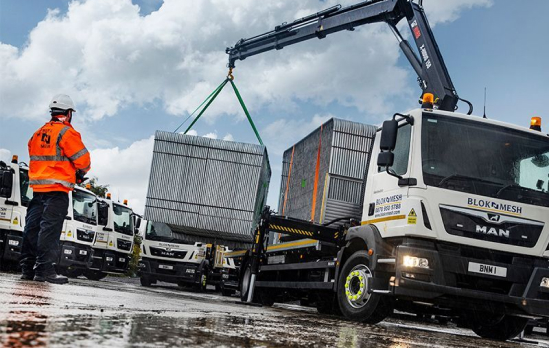
Temporary Fencing Installation
Known for its simplicity and speed, temporary fencing is rapidly and easily installed with very few components required as standard. The most basic set of temporary fencing would typically comprise of a panel, a fence foot and steel couplers. The fence panel legs are dropped into the holes of fence feet and secured together to the next fence panel with steel couplers, which are essentially clamps with a steel nut. Temporary fencing can be installed by one person if required, though a two-person install is much safer and faster.
